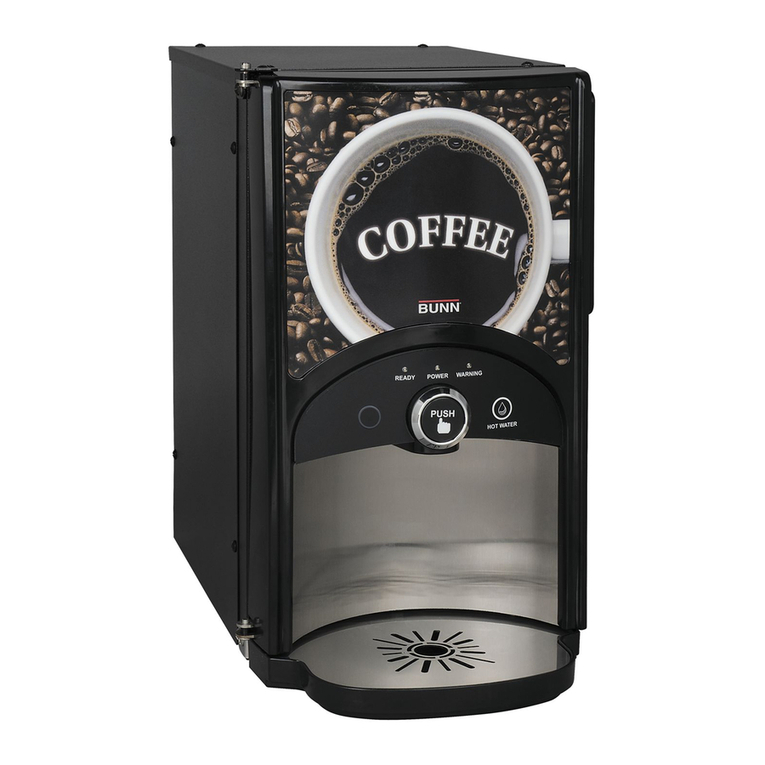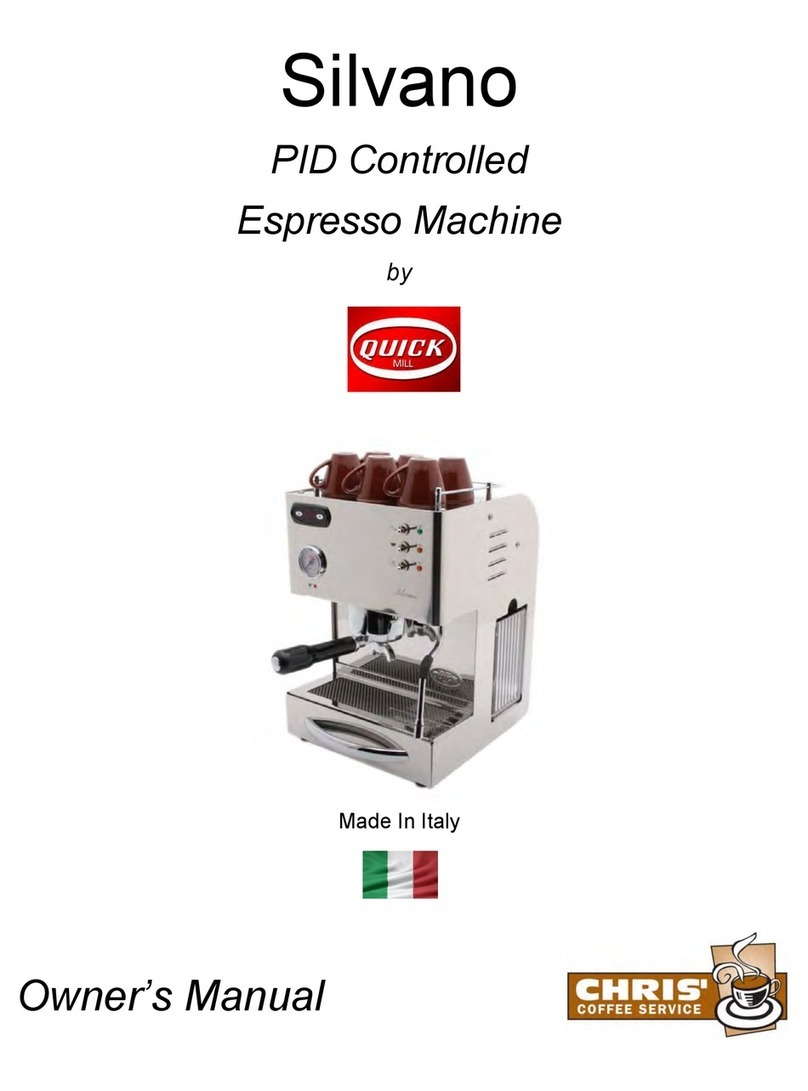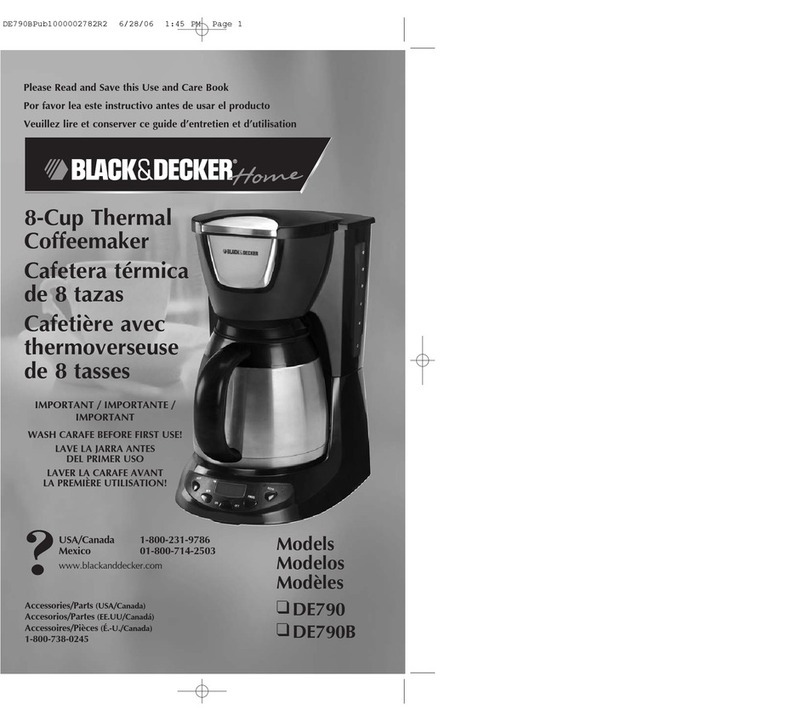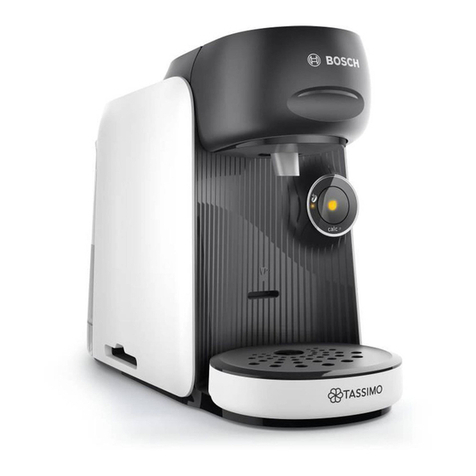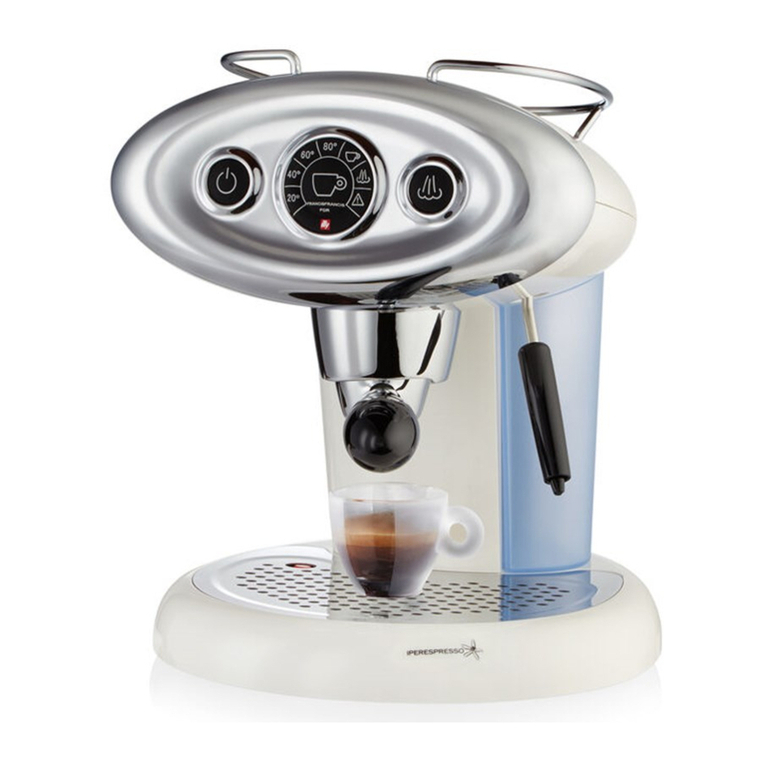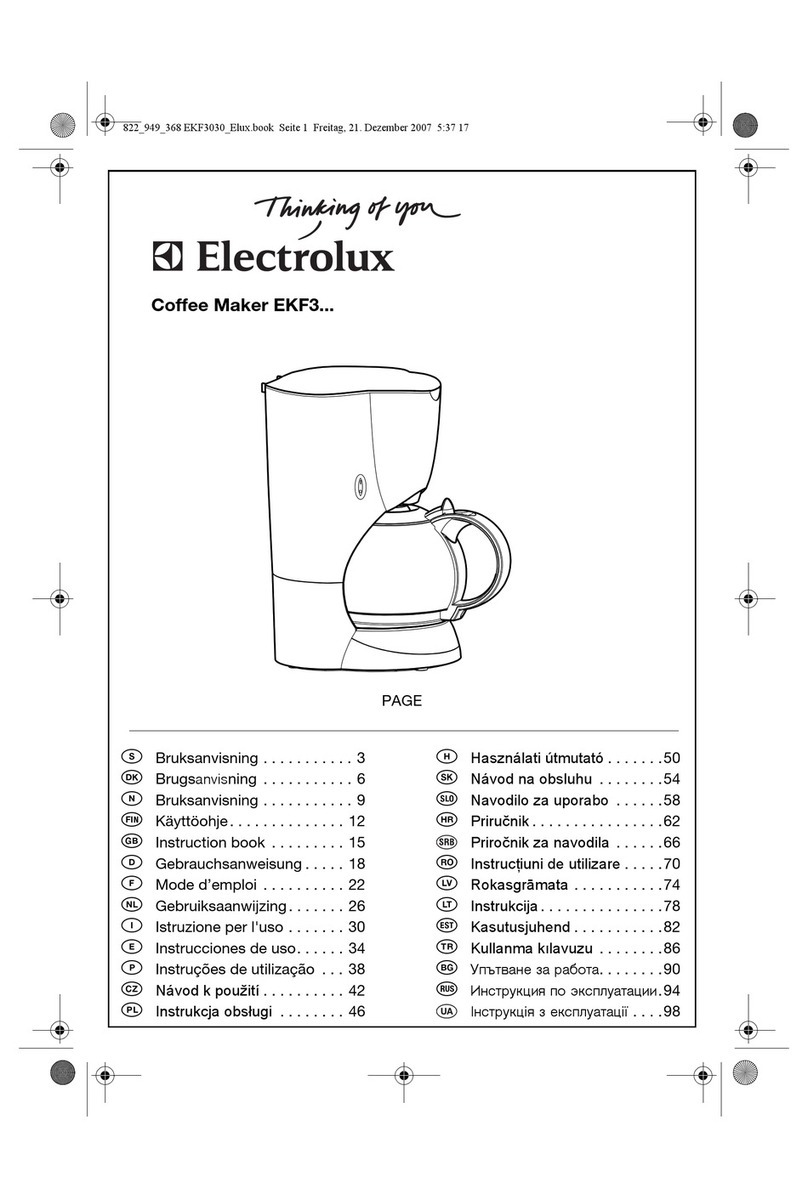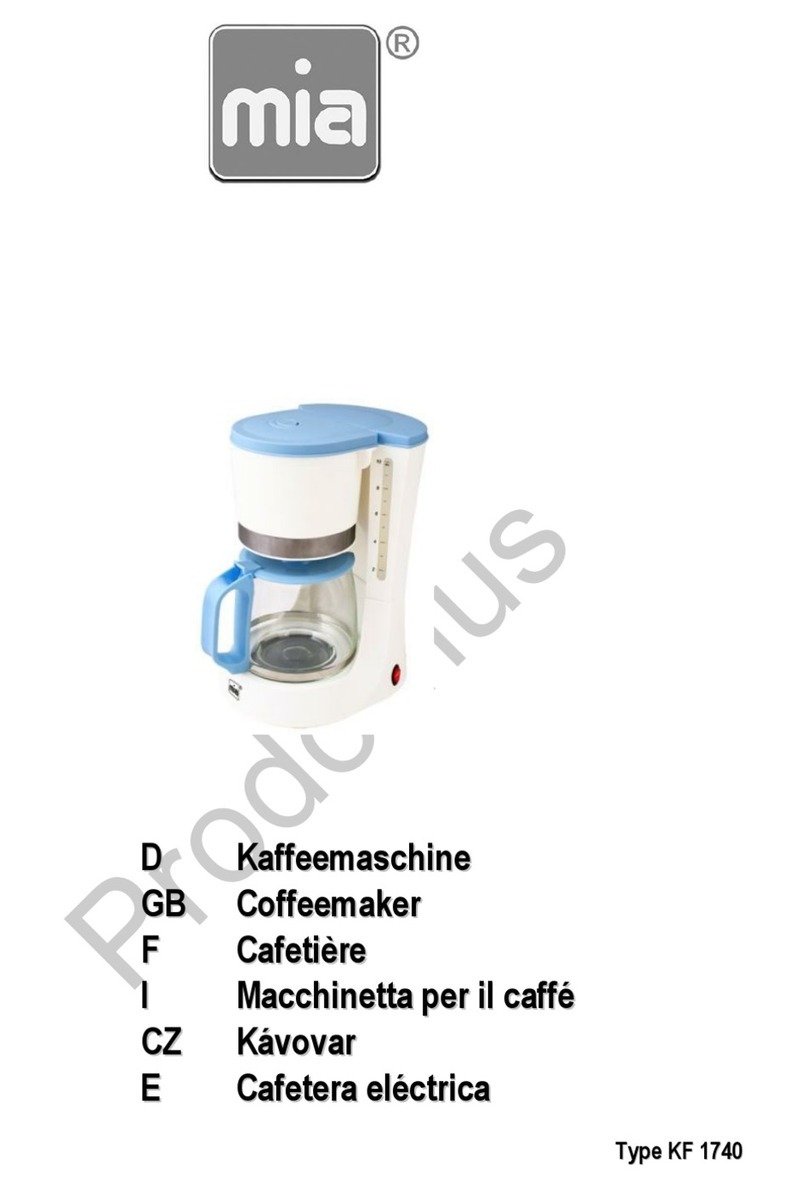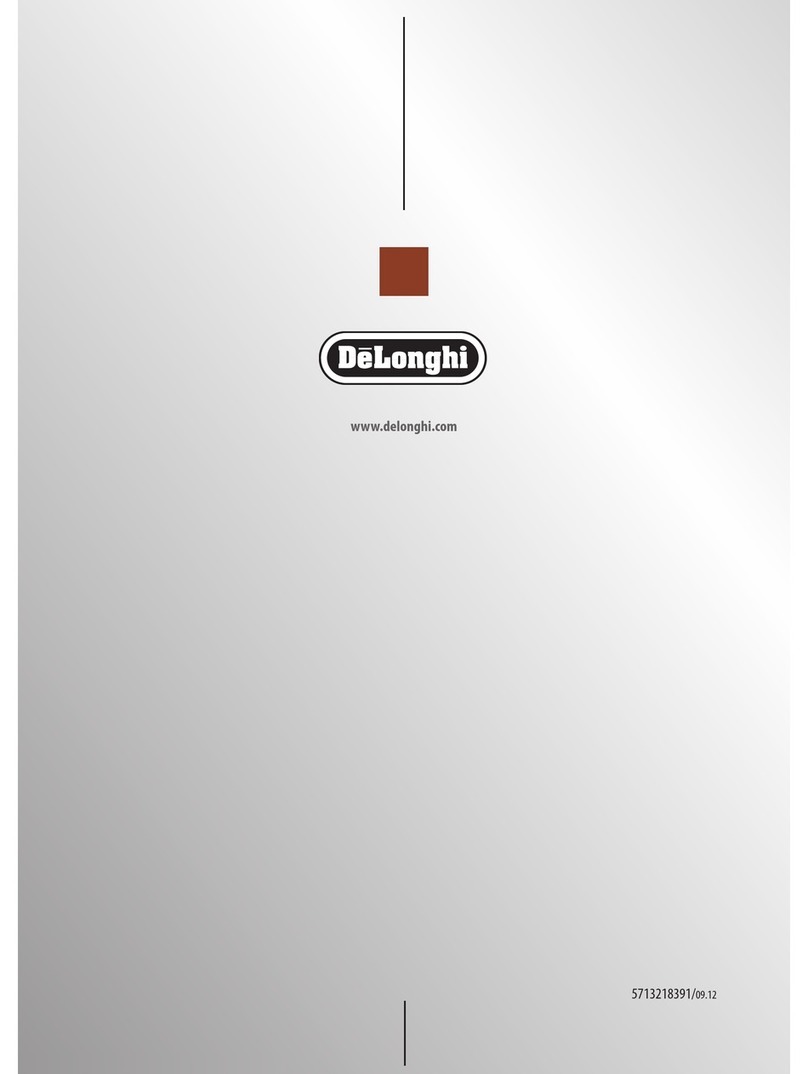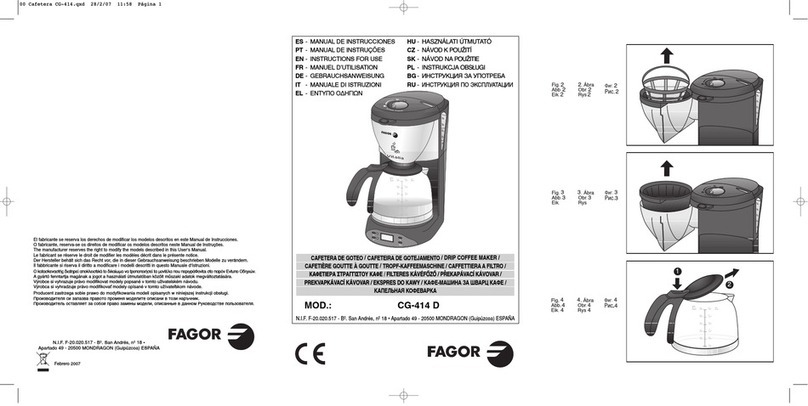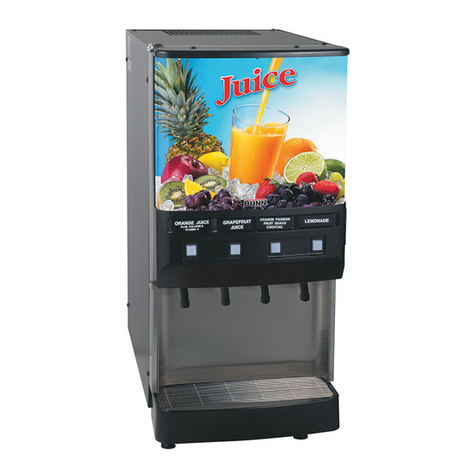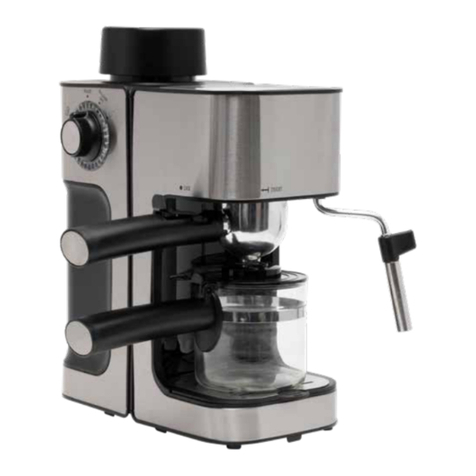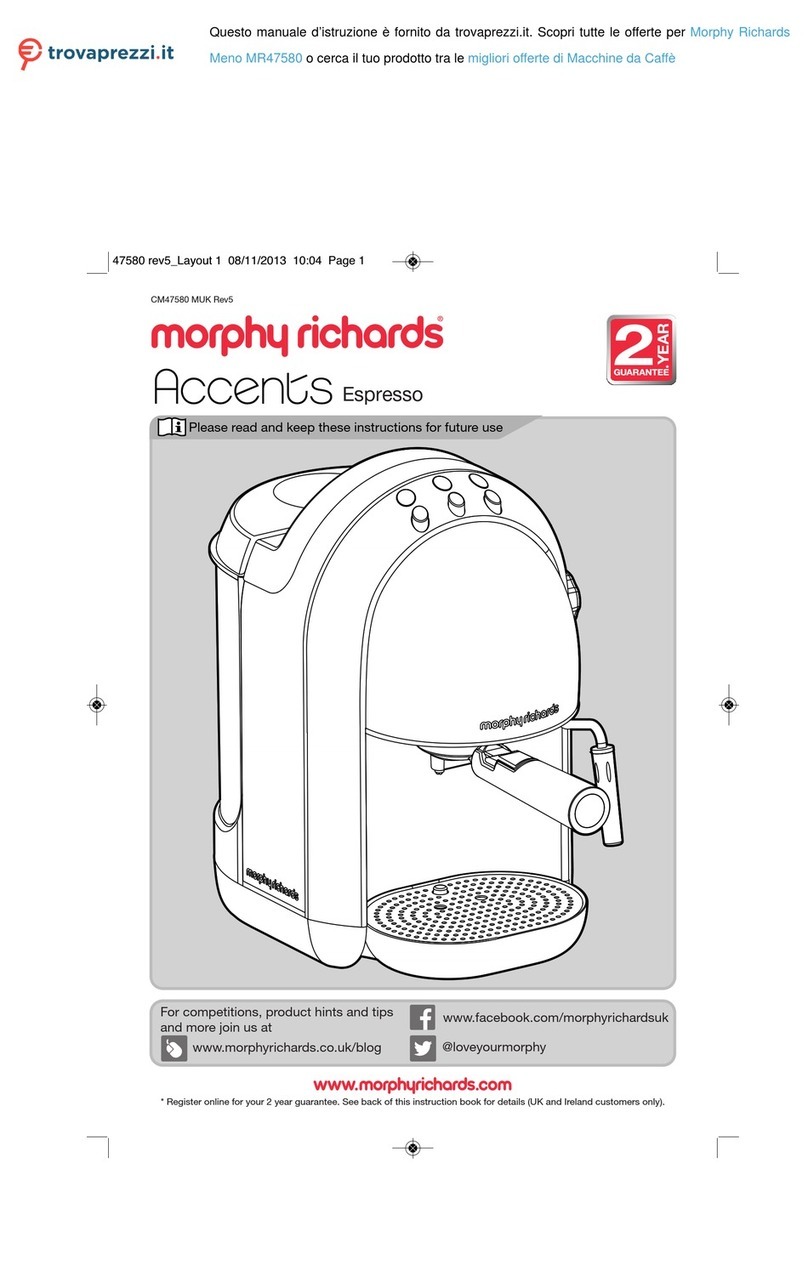
6
Caution on the areas of use
Do not use the appliance in the following areas:
y On an unstable surface
y Near an open ame
y In areas prone to getting
wet
y In areas that allow the
bottom of the main unit to
get wet
y In areas exposed to direct
sunlight for a prolonged period
y Near a wall or furniture
y On a table or rug that is
vulnerable to heat
y On an aluminum sheet or
electric mat
y On a carpet or plastic bag
y In areas with a high room
temperature
y On an induction cooktop
y Outdoors
This precaution is to avoid electric shock, electric leakage, or injuries. Use in places as shown
above may cause a re, short circuit, smoke, ignition, or malfunction.
It may also cause the main unit and/or nearby areas to become deformed or discolored.
If using a kitchen storage rack (a sliding tabletop), note the following instructions.
y Be sure that steam does not stay inside.
y Be sure that the operation panel is not exposed
to a large amount of steam.
y Be sure that the plug is not exposed to steam.
y Pull the sliding tabletop out so it is not
exposed to steam.
y Before use, check the weight limit of the area
where the appliance is placed.
This is to avoid electric shock, burns, or injuries.
Failure to follow these instructions may result in a re, ignition, damage, discoloration, deformation,
or malfunction.
Safety instructions to follow so that the appliance can be used for many years
zClean the parts listed under “Parts to
wash after every use → P. 16” after
every use.
Failure to do so may cause unpleasant odors.
zDiscard the water collected in the tray
after every use.
Failure to do so may cause unpleasant odors
and/or spillage.
z
Do not put the appliance in a dishwasher/
dryer or dish dryer. (This does not apply
to the lid, upper cylinder, lower cylinder,
and water pumping pipe.)
Regarding the parts that can be used with
a dishwasher/dryer or dish dryer, follow the
instructions given under “Using a dishwasher/dryer
or dish dryer (lid, upper cylinder, lower cylinder,
and water pumping pipe only)” → P. 17.
zDo not wash this appliance with boiling
water. (This does not apply to the upper
cylinder gasket, joint gasket, and water
pumping pipe gasket.)
Doing so may result in deformation or breakage.
zIf mineral water or alkali ion water is
used, clean the appliance even more
frequently.
Failure to do so may lead to longer coee
extraction times due to calcium build up inside
the main unit.
Also, calcium built up on the inside surfaces may
clog the hot water spout and/or the steam vent
inside the main unit, causing a malfunction.
zDo not use this product for other than
in-home use.
Doing so may cause a malfunction.
zAfter use, wash out the path inside the
main unit with hot water. → P. 18
Failure to do so may cause unpleasant odors.
Important Safeguards
